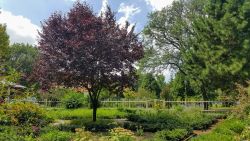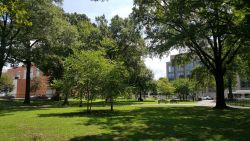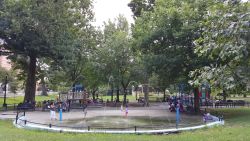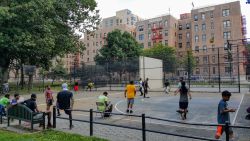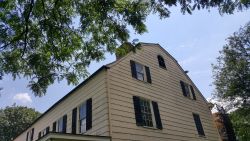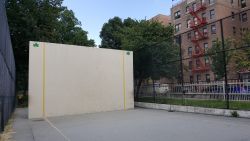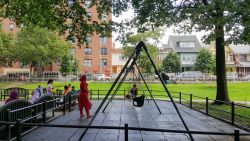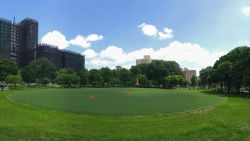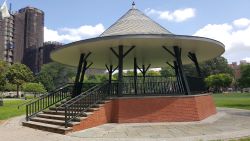Rufus King Park
King Manor Museum and Park
King Manor Museum and Park in Jamaica was once the home of Rufus King (1755-1827), a distinguished lawyer, statesman, and gentleman farmer. The son of a wealthy lumber merchant from Maine, King graduated from Harvard in 1777. He suspended his law studies to serve in the Revolutionary War in 1778. Two years later, King was admitted to the bar in Massachusetts. He served as a member of the Confederation Congress from 1784 to 1787, where he introduced a plan that prevented the spread of slavery into the Northwest Territories. King was a delegate to the Constitutional Convention in 1787, and made his most famous contribution to American history as a framer and signer of the Constitution.
Soon after his marriage to Mary Alsop in 1786, King relocated to New York where he was appointed to the first U.S. Senate, serving from 1789 to 1796 and again from 1813 to 1825. An outspoken opponent of slavery, he led the Senate debates in 1819 and 1820 against the admission of Missouri as a slave state. King served as Minister Plenipotentiary to Great Britain from 1796 to 1803 and again from 1825 to 1826. In 1816 he was the last Federalist to run for the presidency, losing the election to James Monroe. King’s five sons had prominent careers in public service as a Governor of New York, a President of what is now Columbia University, a founder of the Cincinnati Law School, a banker, and a physician.
King Manor reflects the changing tastes of its owners and the times in which they lived. The earliest part of the building dates to the mid-1700s. In 1805 Rufus King purchased the farmhouse and a 90-acre farm for $12,000. He planted orchards, fields, and some of the stately oak trees that still survive near the house. King added the eastern section of the house and a summer kitchen, and introduced Georgian and Federal design elements, such as the dining room with its curved end wall and the neoclassical marble fireplace in the parlor.
By the time of Rufus King’s death in 1827, the estate had grown to 122 acres. King’s eldest son John Alsop King lived here and updated the house with Greek Revival details, such as the entrance portico. Cornelia King, granddaughter of Rufus, was the last family member to occupy the house. After her death in 1896, the house and the remaining eleven acres were bought by the Village of Jamaica for $50,000. The village was absorbed into City of New York in 1898, and the property came under the jurisdiction of the Parks Department.
Park improvements were initiated immediately. Early work included landscaping, fencing, laying sidewalks, planting trees and shrubs, and repairing the old mansion. In 1915 the 3-acre "Hockey Field" was graded and sodded as a place where park-goers could play tennis in the spring and summer and play field hockey in the fall. Also that year a new bandstand was constructed in the center of the park. The 1916 Annual Report for the Parks Department of the Borough of Queens stated that King Park was "a model neighborhood park."
King Manor has operated as a museum since 1900 under the care of the King Manor Association of Long Island, Inc. The house is listed on the National Register of Historic Places, and the house and park are designated New York City landmarks. King Manor Museum is open on a regular basis for tours, educational programs, and community events.
King Manor Museum and Park have benefitted from three major capital projects totaling over $6 million. In 1987-93 the structure was restored and stabilized. In 1991-93 the park underwent an extensive reconstruction, which redistributed the recreation facilities, relocated the bandstand, rebuilt the park house, and provided new paths, fencing, and benches. In 1996-97 a new steel picket fence displaying the words from the Preamble of the Constitution was installed around the perimeter of the house.
Check out your park's Vital Signs
Clean & Safe
Green & Resilient
Empowered & Engaged Users
Share your feedback or learn more about how this park is part of a
Vital Park System

